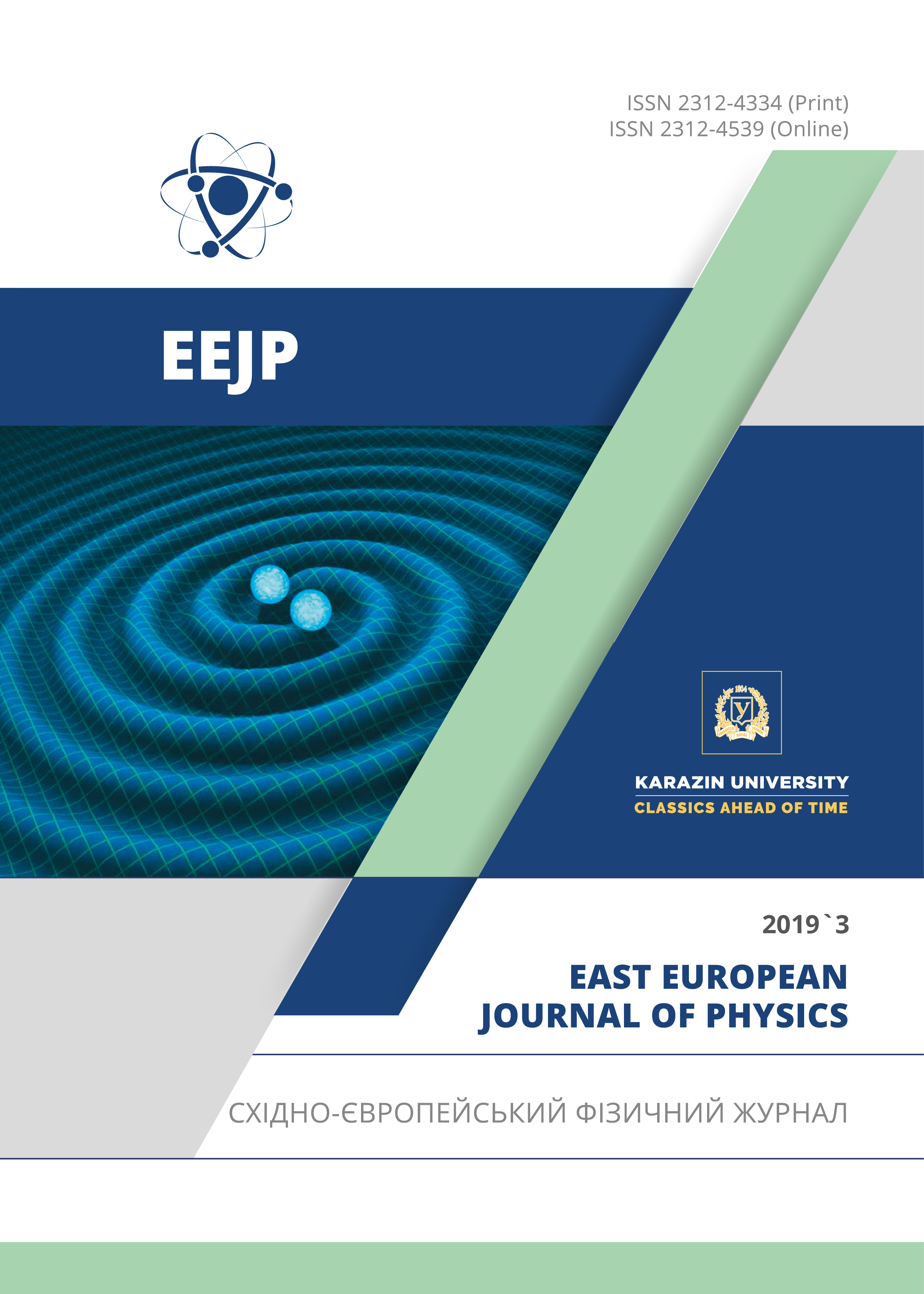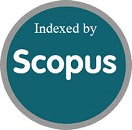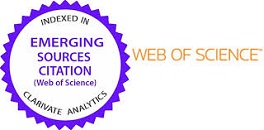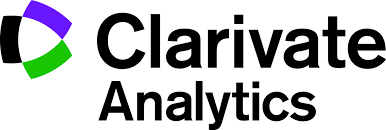Competitive Binding of Novel Cyanine Dye AK3-5 and Europium Coordination Complexes to DNA
Abstract
The present study was undertaken to assess the applicability of the novel trimethine cyanine dye AK3-5 as a competitive ligand for the antitumor agents, Eu(III) coordination complexes (EC), in the DNA-containing systems, using the displacement assay as an analytical instrument. The analysis of fluorescence spectra revealed a strong association of AK3-5 with nucleic acids, with the strength of interaction being higher for the double stranded DNA, compared to the single-stranded RNA. The binding parameters of the cyanine dye have been determined in terms of the McGhee & von Hippel neighbouring site-exclusion model and a classical Langmuir model. The AK3-5 association constant in the presence of DNA was found to be equal to 5.1×104 M-1, which is consistent to those of the well-known DNA intercalators. In turn, the binding of the cyanine to the RNA was characterized by a significantly lower association constant ( ~ 3.4×103 M-1) indicating either the external or “partially intercalated” binding mode. The addition of the europium complexes to the AK3-5-DNA system was followed by the fluorescence intensity decrease, with a magnitude of this effect being dependent on the EC structure. The observed fluorescence decrease of AK3-5 in the presence of europium complexes V7 and V9 points to the competition between the cyanine dye and antitumor drugs for the DNA binding sites. The dependencies of the AK3-5-DNA fluorescence intensity decrease vs. europium complex concentration were analyzed in terms of the Langmuir adsorption model, giving the values of the drug association constant equal to 5.4×104 M-1and 3.9×105 M-1 for the europium complexes V7 and V9, respectively. A more pronounced decrease of the AK3-5 fluorescence in the presence of V5 and V10 was interpreted in terms of the drug-induced quenching of the dye fluorescence, accompanying the competition between AK3-5 and Eu(III) complexes for the DNA binding sites. Cumulatively, the results presented here strongly suggest that AK3-5 can be effectively used in the nucleic acid studies and in the dye-drug displacement assays.
Downloads
References
S.F. Cui, Y. Ren, S.L. Zhang, X.M. Peng, G.L. Damu, R.X. Geng and C.H. Zhou, Bioorg. Med. Chem. Lett. 23, 3267–3272 (2013). https://doi.org/10.1016/j.bmcl.2013.03.118
G. Momekov, T. Deligeorgiev, A. Vasilev, K. Peneva, S. Konstantinov and M. Karaivanova, Med. Chem. 2, 439–445 (2006).
A. Opar, Nat. Rev. Drug Discov., 8, 437–438 (2009). https://doi.org/10.1038/nrd2916
K. Qumaizi, R. Anwer, N. Ahmad and S. Alosaimi, J. Mol. Recognit. 31, 2735–2745 (2018). https://doi.org/10.1002/jmr.2735
M. Anjomshoa and M. Torkzadeh-Mahani, J. Fluoresc. 26, 1505–1510 (2016). https://doi.org/10.1007/s10895-016-1850-z
M. A. Husain, H. M. Ishqi, T. Sarwar, S.U. Rehman and M. Tabish, Med. Chem. Comm. 8, 1283–1296 (2017). https://doi.org/10.1039/C7MD00094D
W.S. Tse and D. Boger, Acc. Chem. Res. 37, 61–69 (2004). https://doi.org/10.1021/ar030113y
J. Szekely and K.S. Gates, Chem. Res. Toxicol. 19, 117–121 (2006). https://doi.org/10.1021/tx050197e
P. Cerutti, Science. 227, 375–381 (1985). https://doi.org/10.1126/science.2981433
K.E. Achyuthan and D.G. Whitten, Comb. Chem. High. Throughput Screen. 10, 399–412 (2007). https://doi.org/10.2174/138620707781996475
K.E. Achyuthan, D.G. Whitten and D.W. Branch, Anal. Sci. 26, 55–61 (2010). https://doi.org/10.2116/analsci.26.55
B. Armitage, Topp. Curr. Chem. 253, 55-76 (2005). https://doi.org/10.1007/b100442
H. Rye, S. Yue, D. Wemmer, M. Quesada, P. Haugland, R. Mathies and A. Glazer, Nucleic Acid Res. 20, 2803-2812 (1992). https://doi.org/10.1093/nar/20.11.2803
X. Yan, W. Grace, T. Yoshida, R. Habbersett, N. Velappan, J. Jett, R. Keller and B. Marrone, Anal. Chem. 71, 5470-5480 (1999). https://doi.org/10.1021/ac990780y
S. Gurrieri, K. Wells, I. Johnson and C. Bustamente, Anal. Biochem. 249, 44-53 (1997). https://doi.org/10.1006/abio.1997.2102
T. Biver, A. Boggioni, F, Secco, E. Turriani, S. Venturini and S. Yarmoluk, Arch. Biochem. Biophys. 465, 90-100 (2007). https://doi.org/10.1016/j.abb.2007.04.034
S. Kaloyanova, V. Trusova, G. Gorbenko and T. Deligeorgiev, J. Photochem. Photobiol. A. 217, 147-156 (2011). https://doi.org/10.1016/j.jphotochem.2010.10.002
L. Glavas-Obrovac, I. Piantanida, S. Marczi, L. Masic, I. Timcheva and T. Deligeorgiev, Bioorg. Med. Chem. 17, 4747-4755 (2009). https://doi.org/10.1016/j.bmc.2009.04.070
A. Kurutos, O. Ryzhova, V. Trusova, U. Tarabara, G. Gorbenko, N. Gadjev and T. Deligeorgiev, Dyes and Pigments. 130, 122-128 (2016). https://doi.org/10.1016/j.dyepig.2016.03.021
A. Kurutos, O. Ryzhova, V. Trusova, G. Gorbenko, N. Gadjev and T. Deligeorgiev. J. Fluoresc. 26, 177-187 (2015). https://doi.org/10.1007/s10895-015-1700-4
A. Kurutos, I. Crnolatac, I. Orehovec, N. Gadjev, I. Piantanida and T. Deligeorgiev, J. Liminescence. 174, 70-76 (2016). https://doi.org/10.1016/j.jlumin.2016.01.035
J. Petty and M. Bordelon, J. Phys. Chem. B. 1041, 7221-7227 (2000). https://doi.org/10.1021/jp000916s
H. LeVine, Protein Sci. 2, 404-410 (1993), https://doi.org/10.1002/pro.5560020312.
K.D. Volkova, V.B. Kovalska, A.O. Balanda, M.Y. Losytskyy, A.G. Golub, R.J. Vermeij, V. Subramaniam, O.I. Tolmachev and S.M. Yarmoluk, Bioorg. Med. Chem. 16, 1452-1459 (2008), https://doi.org/10.1016/j.bmc.2007.10.051.
I.I. Timcheva, V.A. Maximova, T.G. Deligeorgiev, N.I. Gadjev, R.W. Sabnis and I.G. Ivanov, FEBS Lett. 405, 141-141 (1997), https://doi.org/10.1016/S0014-5793(97)00171-3.
J. Nygren, N. Svanvik and M. Kubista, Biopolymers. 46, 39-51 (1998), https://doi.org/10.1002/(SICI)1097-0282(199807)46:1%3C39::AID-BIP4%3E3.0.CO;2-Z.
K.M. Sovenyhazy, J.A. Bordelon and J.T. Petty, Nucleic Acids Res. 31, 2561-2569 (2003), https://doi.org/10.1093/nar/gkg363.
J. Kapuscinski, Z. Darzynkiewicz and M. Melamed, Biochem. Pharmacol. 32, 3679-3694 (1983), https://doi.org/10.1016/0006-2952(83)90136-3.
H. Rye, M. Quesada, K. Peck, R. Mathies and A. Glazer, Nucleic Acid Res. 19, 327-333 (1991), https://doi.org/10.1093/nar/19.2.327.
L.C.T. Shoute and G.R. Loppnow, Phys. Chem. Chem. Phys. 20, 4772-4780 (2018), https://doi.org/10.1039/C7CP06058K.
M.M. Islam, P. Pandya, S.R. Chowdhury, S. Kumar and G.S. Kumar, J. Mol. Struct. 891, 498-507 (2008), https://doi.org/10.1016/j.molstruc.2008.04.043.
H.K. Liu and P.J. Sadler, Acc. Chem. Res. 44, 349-359 (2011), https://doi.org/10.1021/ar100140e.
V. Trusova, A. Yudintsev, L. Limanskaya, G. Gorbenko and T. Deligeorgiev, J. Fluoresc. 23, 193-202 (2013), https://doi.org/10.1007/s10895-012-1134-1.
Citations
Novel cyanine dye as competitive ligand for probing the drug–nucleic acid interactions
(2020) Biophysical Bulletin
Crossref
Authors who publish with this journal agree to the following terms:
- Authors retain copyright and grant the journal right of first publication with the work simultaneously licensed under a Creative Commons Attribution License that allows others to share the work with an acknowledgment of the work's authorship and initial publication in this journal.
- Authors are able to enter into separate, additional contractual arrangements for the non-exclusive distribution of the journal's published version of the work (e.g., post it to an institutional repository or publish it in a book), with an acknowledgment of its initial publication in this journal.
- Authors are permitted and encouraged to post their work online (e.g., in institutional repositories or on their website) prior to and during the submission process, as it can lead to productive exchanges, as well as earlier and greater citation of published work (See The Effect of Open Access).








